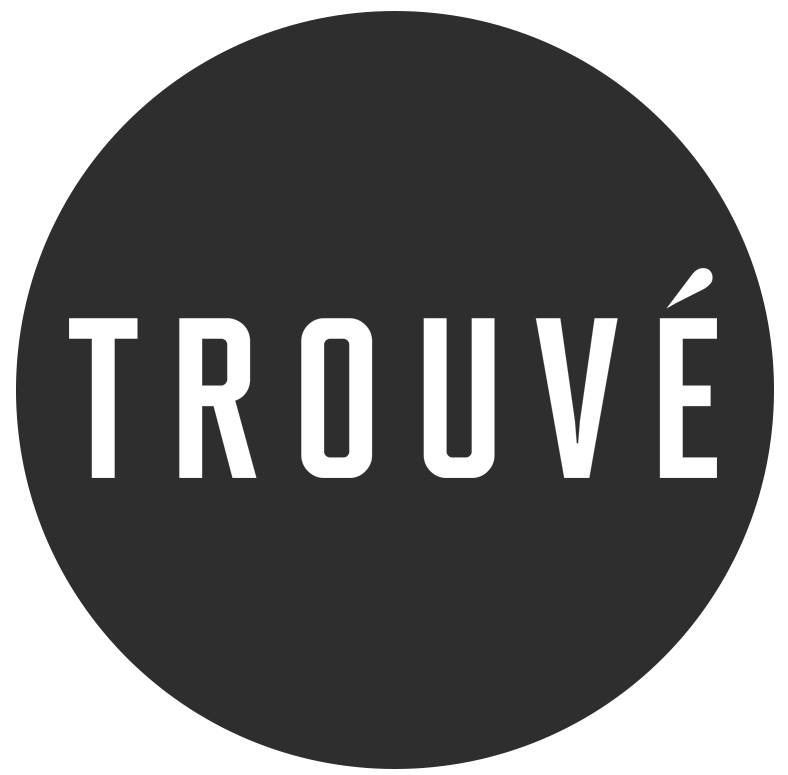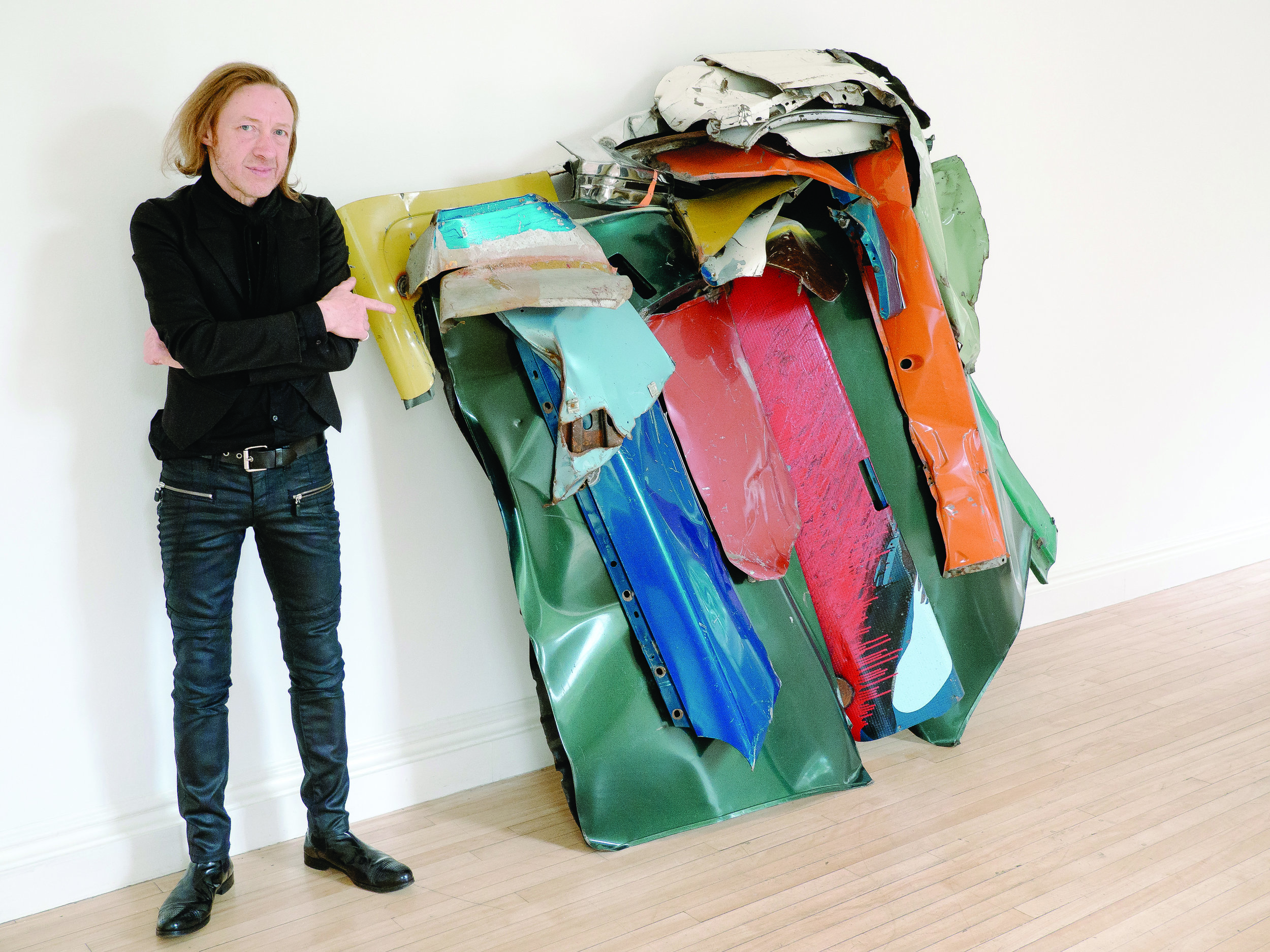The Royal Curator
“Nestled within the Royal Botanic Gardens of Edinburgh, Paul Nesbitt has the unique and devoted privilege of curating a gathering of great artists from all over the world to display in Scotland’s beloved gallery, Inverleith House.”
Interview & Photographs by Morgane Bigault
“For me it’s all about the artists; or rather the art. Then it’s about showing it at the right time and in the right way. This may sound pretty obvious, but the road is full of obstacles and it’s getting worse.” That’s how Paul Nesbitt started the conversation, standing outside the old Inverleith House. Coming through the Royal Botanic Garden of Edinburgh, it’s only a few yards through a tropical vegetation that appears the art gallery where the director and curator of exhibitions gathers artists from all over the world. His agenda is tight, however, he decides to take a few hours to discuss about his life’s journey, the gallery and the impact of his own cultural experience to perhaps remind how art should have more impact on today’s society.
How did your adventure at Inverleith House begin?
In 1993, the Royal Botanic Garden Edinburgh, who had hired me seven years previously to create and present primarily botanical exhibitions, announced that they no longer had funds to support them. I said: “If I can raise the money to do any shows I want, would that be okay?” And they said yes. I had no idea if I could, but Inverleith House has repeatedly been described as the most beautiful gallery in Britain and I’d had immensely powerful experiences of seeing modern and contemporary art there when it was the Scottish National Gallery of Modern At (from 1960 to 1984). Many years later, we have opened the first UK public exhibition devoted to the great American artist John
Chamberlain (1927–2011) and in the last year we have originated and presented major exhibitions by Nicolas Party, Raoul De Keyser, Tony Conrad and Isa Genzken. So things have worked out (so far), but only because lots of other people happened to believe in it too, from artists and commercial galleries to our funding body, Creative Scotland, and not least, all of the (mostly young) people who have contributed by helping us out during that whole time. “I Still Believe In Miracles,” is the title of our 30th anniversary show next year and it’s the title of a text work by Douglas Gordon which has occupied the entrance to one of the upper rooms since his show here in 2006. I pass it every day.
Why is it important to show art in a botanic garden. That’s quite unusual, isn’t it?
Well, I consider the botanic garden to be a great work of applied art in its own right. 800,000 people come every year, for the most part to experience the beauty of the landscape and its 20,000 species of plants. There’s an academic dimension too, because botanic gardens support the study of plants (their taxonomy, distribution and conservation) and I’ve always felt that to appreciate and understand the natural world you need great art as well as great science.
I wasn’t allowed to go to an art school, although art and biology were my best subjects, because being an artist wasn’t considered to be a respectable profession—it arguably still isn’t. The artists I’ve had the privilege of working with are the most intelligent, perceptive and committed people I’ve ever met. I still consider the arts to be the most important thing a society has, so from a personal perspective that’s where my heart lies. But I trained as a plant ecologist and the significance of botanic gardens is also hugely underestimated by society today.
What are you trying to achieve through presenting exhibitions?
I’m really trying to create a situation in which our senses are heightened so that we can perhaps understand ourselves better and have more fun with life. It’s as simple as that.
The American photographer William Eggleston made a fantastic show for us in 2007 (photographs from 1973/4) and just after we’d installed it, I went for a coffee and a large, bright blue box van pulled up at the traffic lights across the road. I couldn’t stop staring at it because it seemed to be made up of the most extraordinary shade of blue.
Eggleston had changed my whole awareness of color. Such experiences have happened repeatedly through working with great artists—from Carl Andre, Louise Bourgeois, Isa Genzken and Agnes Martin to Robert Ryman, Richard Tuttle, Cy Twombly and Lawrence Weiner.
So, how do you achieve that?
In the early days, I didn’t understand that it wasn’t enough just to show work by great artists. It has to be relevant to what’s happening today. We don’t have a selection committee. I look at art all the time and am constantly questioning the relevance of those artists whose work has made an unforgettable impression on me. Those impressions don’t even have to be positive; there have been times when I’ve hated certain works of art and later on, come to love them. But the programme’s structure makes the selection process easier as I think in terms of seasons. The gallery is full of natural light as there are up to four large windows in each room and the look and feel of the garden (the light, the plants) greatly affects the visitor’s experience, so artists are invited to make exhibitions to be shown in spring, summer, autumn or winter periods and each show is specific to that season. This also promotes continuity in terms of the feel of the whole year; one flows naturally into another, even though there is a lot of variety and contrast in the programme. It’s like a menu; four breakfasts are never a good idea.
What is your most memorable experience?
If I had to single one out it is probably the time I was in New York and I had gone there to visit a girlfriend who lived there and stay for a few weeks on holiday. She was a dancer on the club scene and it was 1996 and she had just moved to Williamsburg from Hell’s Kitchen in Manhattan. On the first night she told me she was seeing someone else and I was devastated. I moved to the apartment of a great artist friend called Illtyd Barrett and was ready to go back to Scotland. I was a mess. But he convinced me to stay and get something done so I decided to try and contact Carl Andre. I’d long considered him to be the most important sculptor after Brancusi but had no idea how to contact him. I called up Paula Cooper’s gallery and they kindly arranged for me to meet with Paula, whom I’d never met. We spoke for an hour, drinking coffee and smoking, sitting on chairs designed by Donald Judd. At the end she said that she thought Carl might like to meet me and two days later, he invited me for dinner. We subsequently made two extraordinary shows, by Carl and his wife, Melissa Kretschmer and as Carl was leaving Edinburgh several days after the opening, he turned to me and said “Well, Paul, it doesn’t get any better than this”. And I thought, “Wow.” His generosity and Paula’s generosity had a profound effect on me and enabled me to think that really, anything was possible. But there have been so many memorable experiences and I treasure them all.
Do you have any advice for aspiring artists?
Try to find something you love doing then try to get paid for it. Be nice and try to work with people you can learn from. Stay away from stupid or jealous people and don’t copy everyone else. Do something different. Following what’s ‘hot right now’ is pointless—you’re already too late; the most interesting stuff is happening in the shadows.
I have always tried to show new work by artists, whether they’re famous or relatively unknown. Most of Scotland’s leading artists have made their first major shows at Inverleith House, from Richard Wright, Jim Lambie and Douglas Gordon to Lucy McKenzie, Karla Black, Luke Fowler, Ciara Phillips and Corin Sworn, to name a few. In the last 15 years, Scotland has produced more leading artists than any other country (per capita), so we’ve been fortunate in that respect. All of the exhibitions are originated by us and installed by the artist and I’ve concentrated on making solo shows, because Inverleith House is too small for meaningful group shows. We also invite artists to create exhibitions to be shown simultaneously with exhibitions from the garden’s botanical archive, but there’s never any compromise. We don’t try to engage contemporary artists to explain anything. The artist Rudolf Stingel once worked with our archive of Indian botanical drawings and against my expectations only exhibited five small identical black-and-white paintings, which were copied from a photograph of the artist by the American photographer Sam Samore. But it made visitors question the whole nature of representation in a provocative and wholly revealing way. So perhaps my final piece of advice would perhaps be – to always trust the artist.
For More Information
Inverleith House is continually showing fantastic exhibitions and the Royal Botanic Garden is open to the public daily except December 25th and January 1st.
Visit their website for more information at rbge.org.uk.










